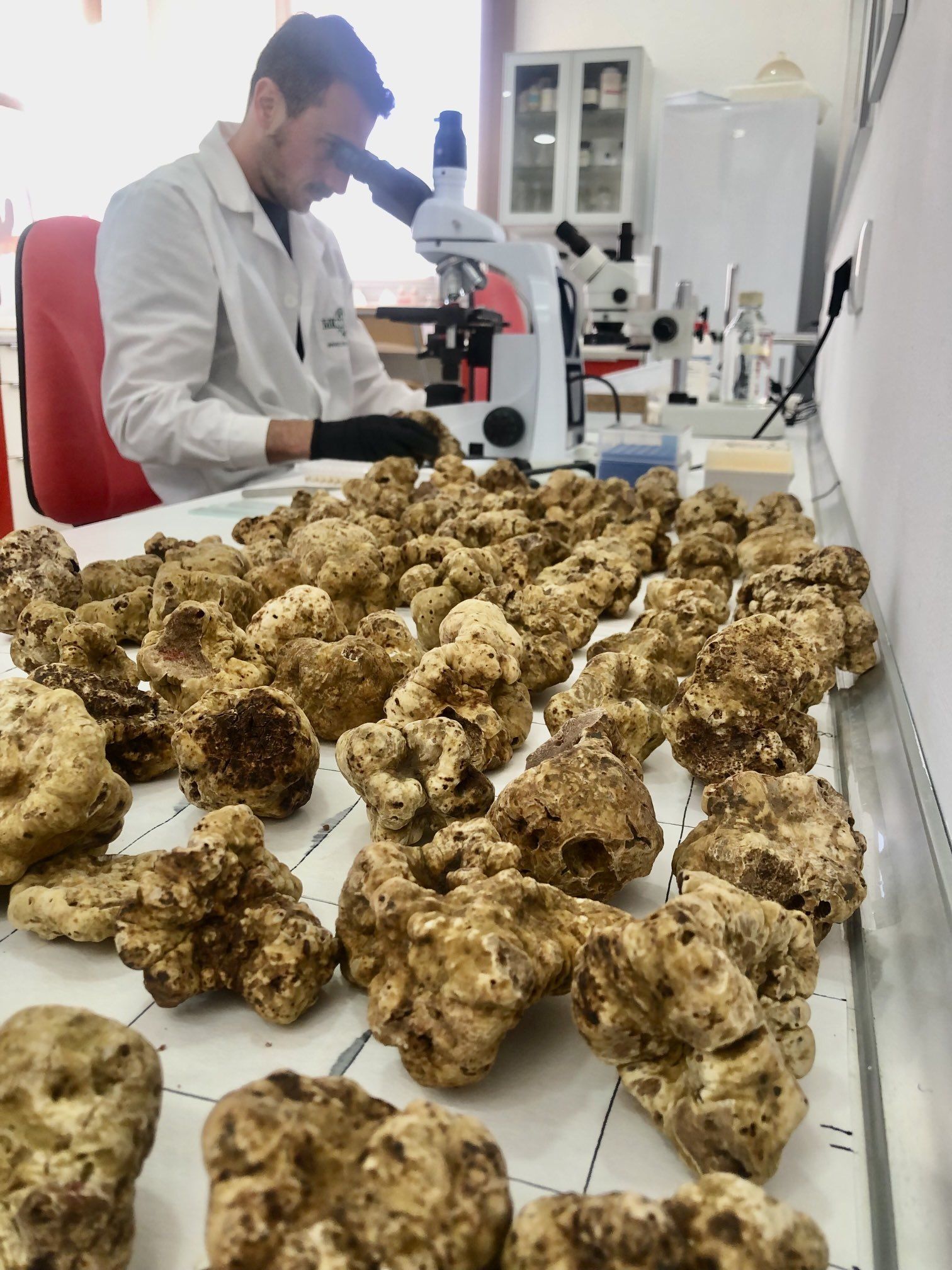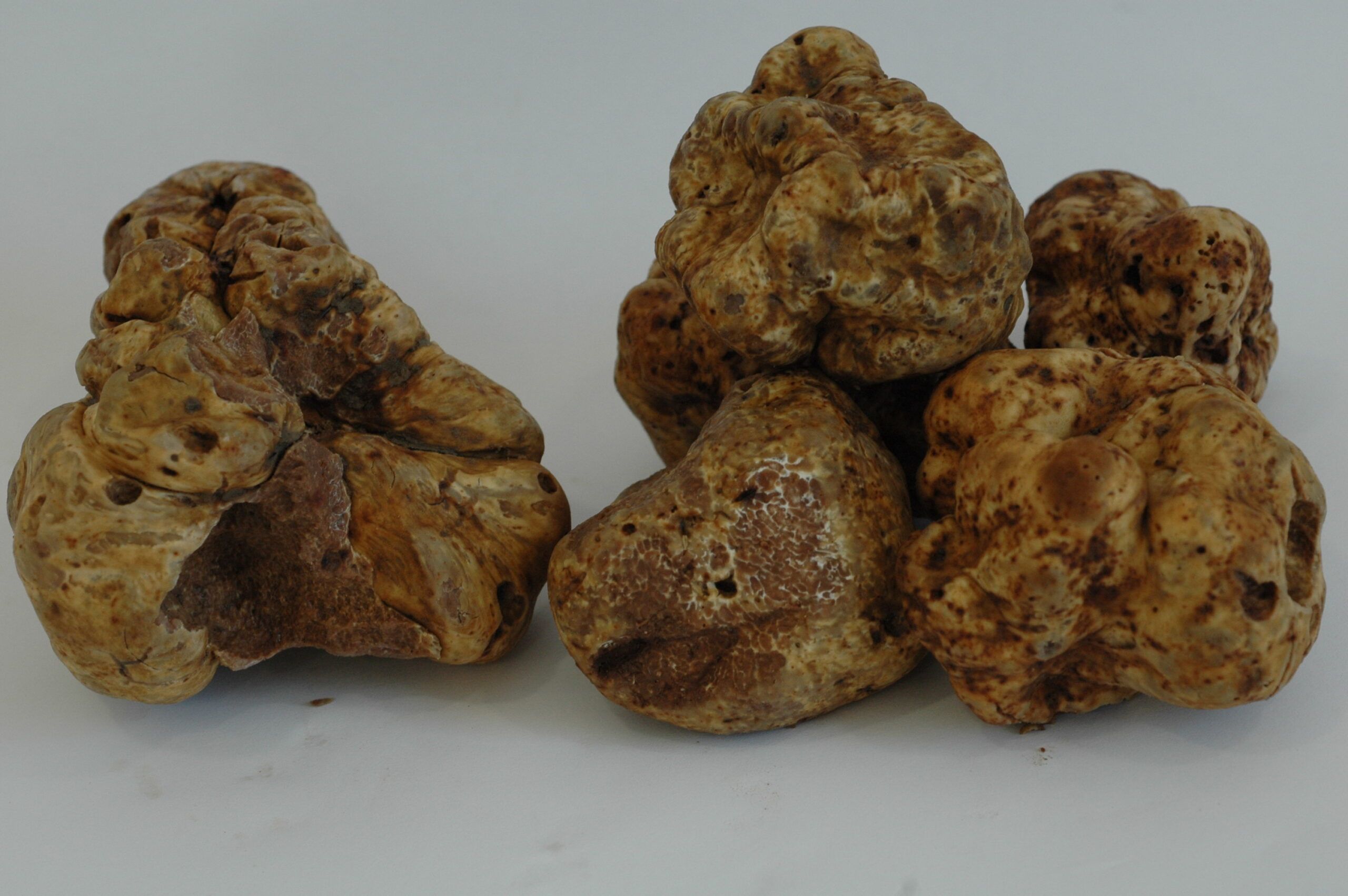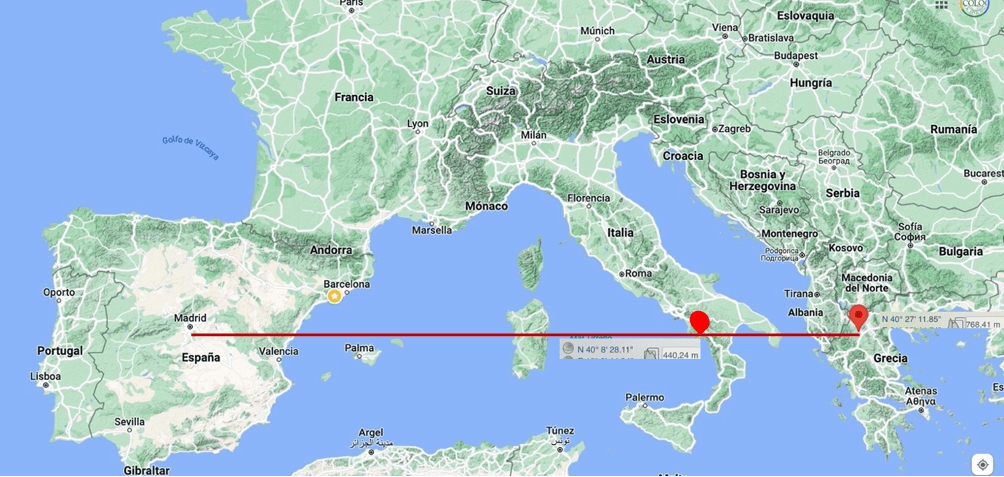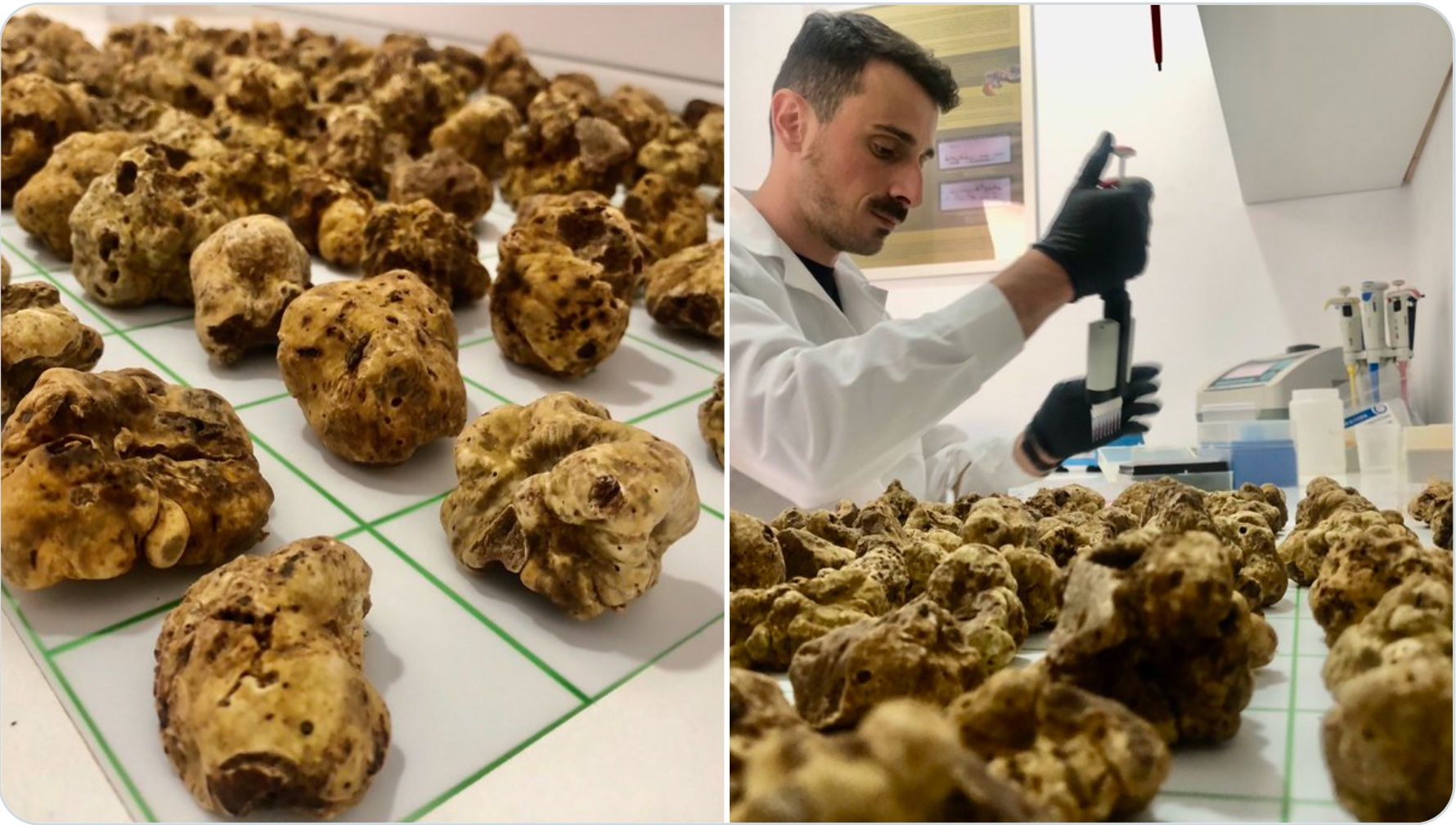Tuber magnatum Picco es la más cara de las trufas. Está considerada la mejor trufa por su intenso aroma y sabor único. Como consecuencia, los precios minoristas italianos de T. magnatum son más altos que los de cualquier otra trufa y la convierten en uno de los alimentos más caros del mundo, con precios que oscilan entre 1.000 y 6.000 EUR por kg y un negocio de aproximadamente 900 millones de EUR al año.
Tuber magnatum es una “trufa blanca” y al igual que otras como Tuber borchii, Tuber dryophilum y Tuber puberulum se caracteriza por tener una piel o peridio suave y de color pálido. La gleba contiene venas finas y claras, que en la madurez son de color avellana claro.
Existen numerosas investigaciones para intentar comprender su ecología y biología. No obstante, mucha información sobre su ciclo de vida aún no está clara lo que ha dificultado enormemente su cultivo y tan sólo recientemente hemos tenido las pruebas científicas de que podría ser posible.
En los últimos años el cultivo de T. magnatum ha recibido un nuevo enfoque. Con el desarrollo de primers moleculares específicos, ahora se pueden identificar inequívocamente sus micorrizas y micelio mediante PCR.
En 2019 y 2020 se demostró en Francia que era posible cultivarla como otras especies de trufas, y fuera de su zona natural de cultivo, en tan sólo 4 y 5 años después de la plantación, similar a lo que pasaría en una plantación de trufa negra o de verano, pero no hay que olvidar que estanos hablando de tan sólo una sola plantación de 50 robles, donde fructificó en 5 árboles. Aunque esto es muy interesante y abre las puertas al cultivo, todavía son necesarios muchos estudios de campo para optimizar las prácticas de cultivo de T. magnatum.
Debido al aumento de la demanda en este tipo de árboles y tras varios años de investigación, Micofora ha decidido sacar al mercado árboles micorrizados con Tuber magnatum.
Es importante señalar que, aunque podemos proporcionar árboles con magnatum certificados con ADN, estamos en el comienzo de comprender este cultivo. Todavía hay muchas lagunas de información sobre su ciclo de vida y si intentar cultivar cualquier especie de trufa es ya una empresa arriesgada, cultivar magnatum lo será aún más.
En las siguientes líneas intentaremos explicar por qué fracasaron los ensayos de las últimas décadas y qué sabemos sobre su ecología.

¿Por qué fracasaron tantos ensayos y plantaciones en el pasado?
En primer lugar, la descripción de las micorrizas fue inicialmente errónea, lo que llevó a que se hayan comercializado árboles infectados con otras trufas de menor calidad, como borchii u oligospermum, que se utilizaron de inóculo por fácil confusión. No fue hasta el año 2000 que las técnicas de ADN pudieron solucionarlo.
En Italia se vendieron cientos de miles de árboles y apenas unas 10 plantaciones produjeron magnatum entre 15 y 20 años después. Estas plantaciones se encontraban en zonas naturales productoras de trufa blanca, por lo que pudieron contaminarse de forma natural pasados esos años con magnatum silvestre. Algunos produjeron primero borchii, considerado un hongo que se asocia normalmente a árboles jóvenes, antes de pasar a producir magnatum, en la misma plantación años más tarde.
Otra peculiaridad de esta trufa es que produce pocas micorrizas en el campo y la producción de árboles en vivero es difícil. A menudo, el micelio o micorrizas no se pueden detectar ni siquiera en sitios altamente productivos. Aparentemente, la presencia de micelio o micorrizas no es un signo claro de productividad del sitio.
¿Dónde fructifica de forma natural?
magnatum se puede recolectar desde mediados de septiembre hasta finales de diciembre. Durante mucho tiempo se ha considerado una trufa casi exclusivamente restringida al norte y centro de Italia. Pero hoy en día existen zonas productivas en Croacia, Hungría (a 47º latitud N), varias regiones de los Balcanes, sureste de Francia, Suiza, Sicilia (a 37º latitud N) y Grecia. La información sobre la ecología en estas dos últimas zonas, en los 40º de latitud norte, son muy interesantes para intentar cultivarla en regiones centrales de España u otros países de clima puramente mediterráneo.

Tuber magnatum distribución natural en Europa (fuente: Čejka et al. Mycorrhiza (2023) 33:291–302)
 Suelo
Suelo
Tuber magnatum crece en margas bien drenadas y bien estructuradas, con poca grava o piedra, pero parece mejor adaptada que las otras trufas a suelos arcillosos.
Mientras que la trufa negra (melanosporum) requiere suelos bien drenados con mayor contenido de arena/limo, los suelos de trufa blanca contienen más arcilla (> 20%). Si hay menos arcilla, entonces domina el contenido de limo (45%). El pH óptimo varía de neutro a moderadamente alcalino, alto en carbonatos y caracterizado por un alto grado de saturación de bases y suficiente agua durante todo el año. Los suelos donde la trufa blanca fructifica de forma natural exhiben niveles de pH entre 6,4 y 8,7, con un pH promedio de 7,7 y una alta macroporosidad.
Estos suelos también suelen tener cantidades considerables de carbonatos (un promedio del 15 al 18 %, aunque algunos sitios húngaros y balcánicos tienen menos del 10 %). El contenido de nitrógeno es relativamente bajo (0,19-0,26%) y la materia orgánica oscila entre el 4,5-14%.
También se asocia con aguas superficiales estancadas o zonas de vega, orillas de los ríos o torrentes, aunque también fructifica en márgenes de bosques. La presencia constante de agua es un factor clave, lo que normalmente se traduce en una densa cobertura arbórea.
No hay que olvidar que para el cultivo de cualquier variedad de trufa, en plantaciones donde usaremos maquinaria, poder trabajar en un suelo de baja compactación es clave para la producción.

parámetros medios en suelos naturales de trufa blanca (fuente: Čejka et al. Mycorrhiza (2023) 33:291–302)
Árboles a los que se asocia
Tuber magnatum fructifica principalmente con Alnus cordata (aliso), Corylus avellana (avellana), Ostrya carpinifolia, Populus alba (álamo blanco), P. tremula (álamo temblón), P. nigra (álamo de Lombardía), Quercus cerris (roble turco). roble), Q. ilex (encina), Q. pubescens (roble pubescente), Q. robur (roble inglés o común), Salix alba (sauce), S. caprea (sauce), Tilia cordata (tilo), T. platyphyllos (tilo de hoja grande) y Fagus sylvatica (haya).
Quercus pubescens será el principal árbol huésped producido en nuestros viveros.
Ecología y Clima
 Tuber magnatum crece de forma natural en climas que van desde el subcontinental al mediterráneo, donde la precipitación media anual suele ser elevada, de 600 a 800 mm, incluso hasta 1200 mm, y con lluvias de verano entre 135–160 mm, sin un periodo seco en verano o al menos donde se mantiene la humedad durante todo el verano. En todas las plantaciones recomendamos añadir riego para compensar la falta de lluvias del verano.
Tuber magnatum crece de forma natural en climas que van desde el subcontinental al mediterráneo, donde la precipitación media anual suele ser elevada, de 600 a 800 mm, incluso hasta 1200 mm, y con lluvias de verano entre 135–160 mm, sin un periodo seco en verano o al menos donde se mantiene la humedad durante todo el verano. En todas las plantaciones recomendamos añadir riego para compensar la falta de lluvias del verano.
En áreas naturales más al norte, como Suiza, magnatum tolera un exceso de precipitación en verano de hasta el 180% de lo normal, esto combinado con el hecho de que el micelio de T. magnatum es más elevado con un potencial hídrico de alrededor de 0 kPa (suelo empapado), significa que es mejor mantener nuestro suelo continuamente húmedo en verano.
Resultados obtenidos en diferentes hábitats de Italia revelaron como a principios de primavera, la cantidad media de micelio tiende a aumentar y redistribuirse dentro de las zonas de fructificación, mientras que en otoño se concentra sólo en las proximidades de las trufas formadas. Este micelio, medido con PCR cuantitativa, muestra una mayor concentración asociado a un alto contenido de agua (por cierto, un comportamiento bastante similar al que observamos en melanosporum).
Esta trufa prefiere fondos de valles o laderas con pendientes suaves. La altitud es bastante variable dependiendo de las latitudes, como ocurre con el melanosporum: en latitudes más altas puede fructificar al nivel del mar pero en zonas del sur como Grecia o Italia hasta los 800-1000 metros. Prefiere vegetación densa (sombra), manteniendo así mayor humedad del suelo en todas las estaciones. Así recomendamos en plantaciones unos 400 árboles/hectárea, con marcos de 4x6m o 5x5m, aunque si queremos utilizar aperos desplazados para no pisar zonas productivas, mejor el 4x6m para tener carriles más anchos.
En una de las zonas productoras naturales más meridionales, a 3 horas en coche al sur de Nápoles, las truferas están orientados al norte, asociadas a un suelo franco-arenoso fino, con un alto contenido de carbonatos y sobre conglomerados. En altitudes entre los 350 a 750 m. Esto es lo mismo que ocurre en España con melanosporum silvestre, que busca sol y vertientes sur en el norte del país, pero zonas de sombra y orientación norte en las latitudes más meridionales.
¿Podremos cultivar T. magnatum en España?
Una vez más, intentar cultivar esta trufa es una empresa de alto riesgo. Dicho esto, compartimos los mismos suelos y climas de las zonas donde esta trufa fructifica de forma natural en el sur de Italia o centro de Grecia. Con una radiación de 7,8kWh en pleno verano y temperaturas media en el mes más caluroso de 23ºC y media en el mes más frío entre 2ºC-6ºC como se ve en las siguientes figuras, añadiendo Teruel como principal región trufera de España para poder comparar:



